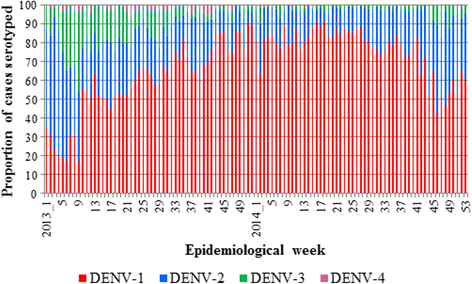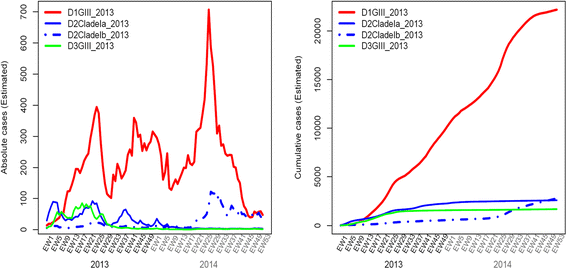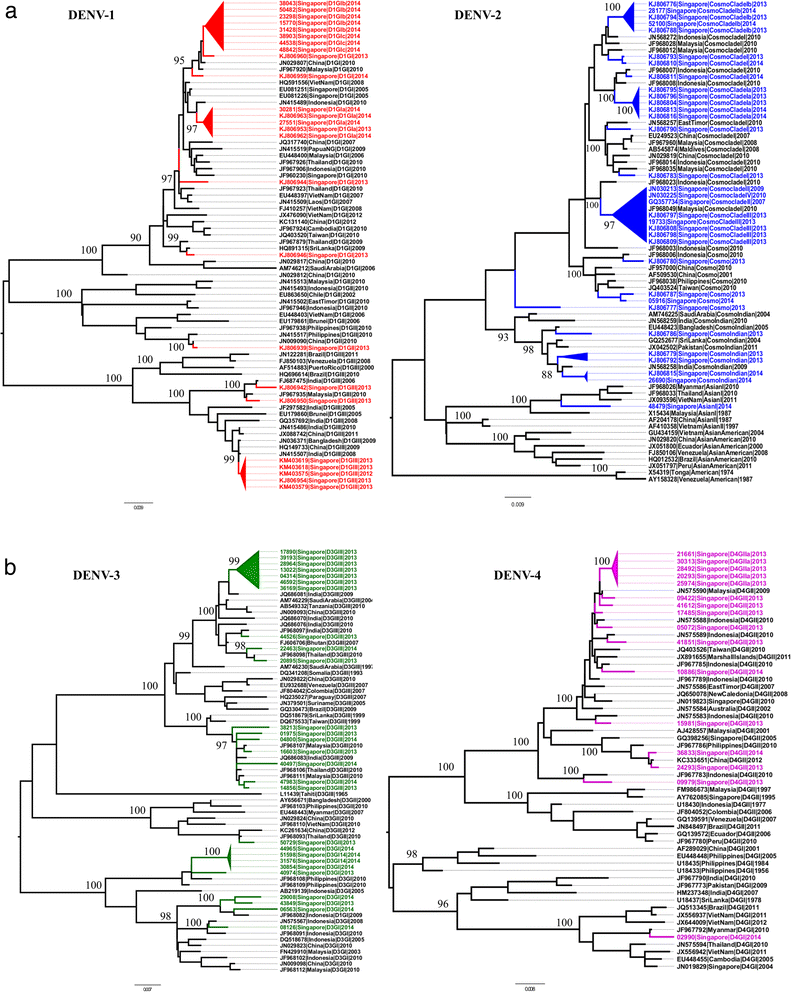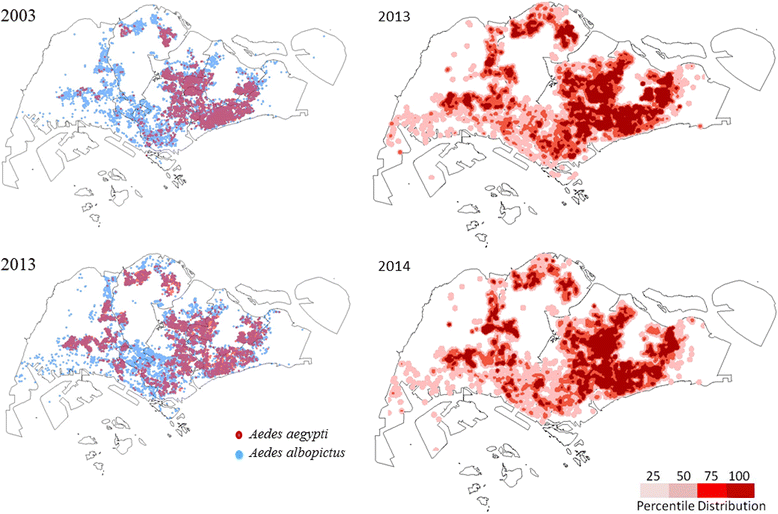Epidemic resurgence of dengue fever in Singapore in 2013-2014: A virological and entomological perspective
- PMID: 27316694
- PMCID: PMC4912763
- DOI: 10.1186/s12879-016-1606-z
Epidemic resurgence of dengue fever in Singapore in 2013-2014: A virological and entomological perspective
Abstract
Background: Dengue resurged in Singapore during 2013-14, causing an outbreak with unprecedented number of cases in the country. In the present study, we summarise the epidemiological, virological and entomological findings gathered through the dengue surveillance programme and highlight the drivers of the epidemic. We also describe how the surveillance system facilitated the preparedness to moderate epidemic transmission of dengue in the country.
Methods: The case surveillance was based on a mandatory notification system that requires all medical practitioners to report clinically-suspected and laboratory-confirmed cases within 24 hours. The circulating Dengue virus (DENV) populations were monitored through an island wide virus surveillance programme aimed at determining the serotypes and genotypes of circulating virus strains. Entomological surveillance included adult Aedes surveillance as well as premise checks for larval breeding.
Results: A switch in the dominant serotype from DENV-2 to DENV-1 in March 2013 signalled a potential spike in cases, and the alert was corroborated by an increase in average Aedes house index. The alert triggered preparedness and early response to moderate the impending outbreak. The two-year outbreak led to 22,170 cases in 2013 and 18,338 in 2014, corresponding to an incidence rate of 410.6 and 335.0 per 100,000 population, respectively. DENV-1 was the dominant serotype in 2013 (61.7 %, n = 5,071) and 2014 (79.2 %, n = 5,226), contributed largely by a newly-introduced DENV-1 genotype III strain. The percentage of houses with Ae. aegypti breeding increased significantly (p < 0.001) from 2012 (annual average of 0.07 %) to 2013 (annual average of 0.14 %), followed by a drop in 2014 (annual average of 0.10 %). Aedes breeding data further showed a wide spread distribution of Ae. aegypti in the country that corresponded with the dengue case distribution pattern in 2013 and 2014. The adult Aedes data from 34 gravitrap sentinel sites revealed that approximately 1/3 of the monitored sites remained at high risk of DENV transmission in 2013.
Conclusions: The culmination of the latest epidemic is likely to be due to a number of demographic, social, virological, entomological, immunological, climatic and ecological factors that contribute to DENV transmission. A multi-pronged approach backed by the epidemiological, virological and entomological understanding paved way to moderate the case burden through an integrated vector management approach.
Keywords: Aedes aegypti; Control; Dengue; Entomology; Epidemic; Genotype; House index; Surveillance; Virology.
Figures







References
MeSH terms
LinkOut - more resources
Full Text Sources
Other Literature Sources
Medical
Molecular Biology Databases

